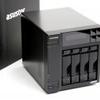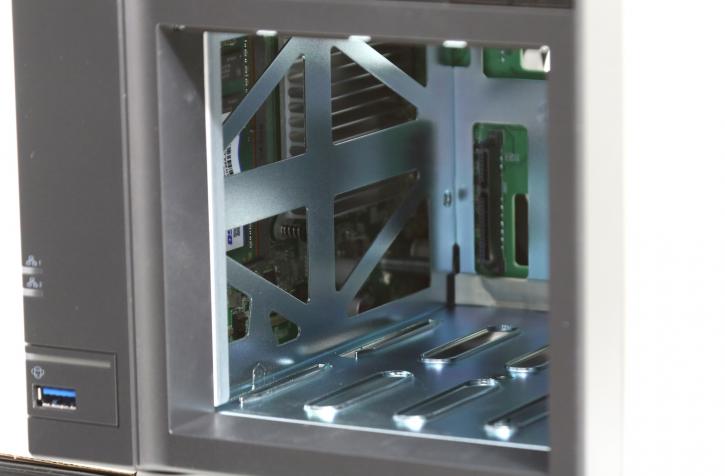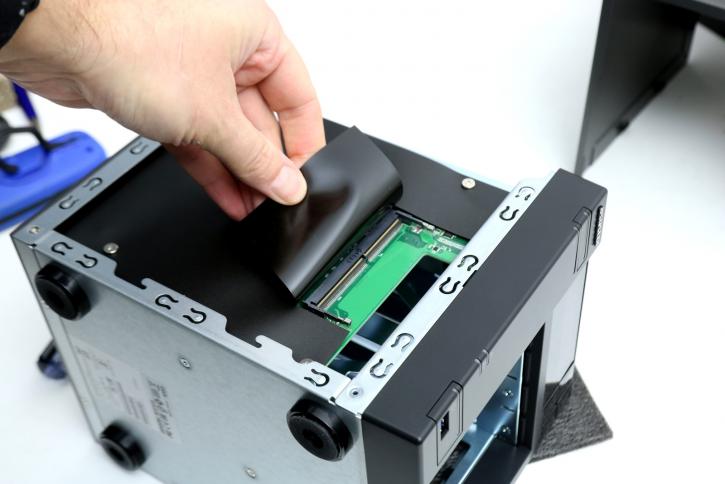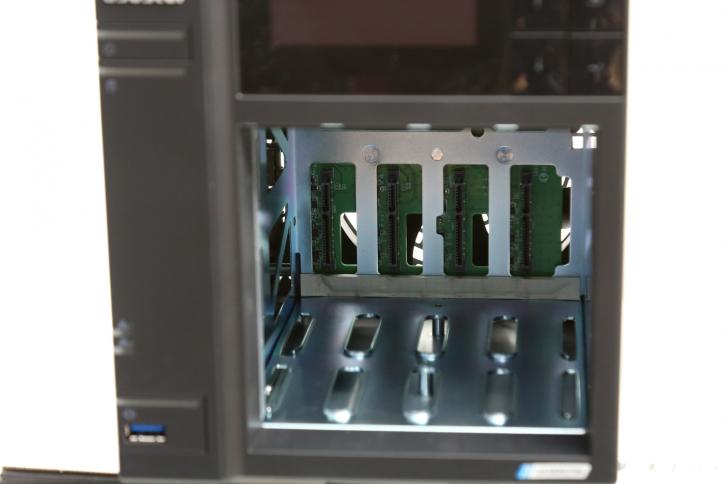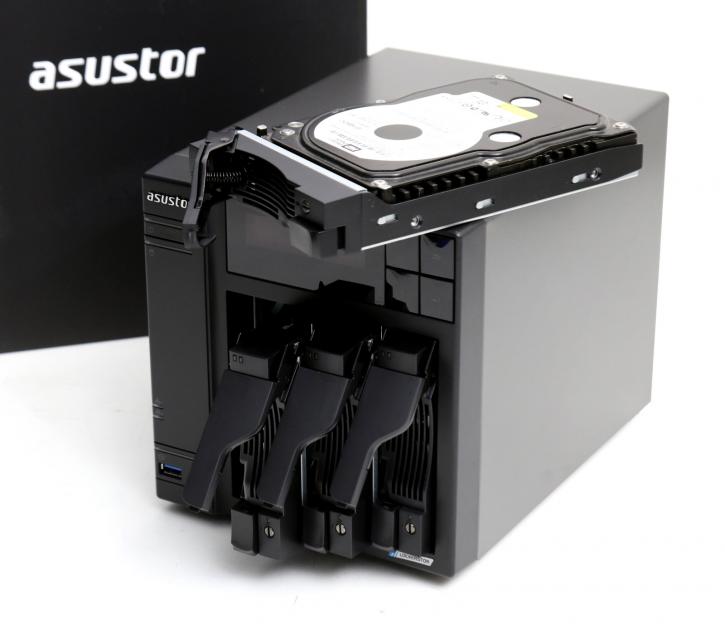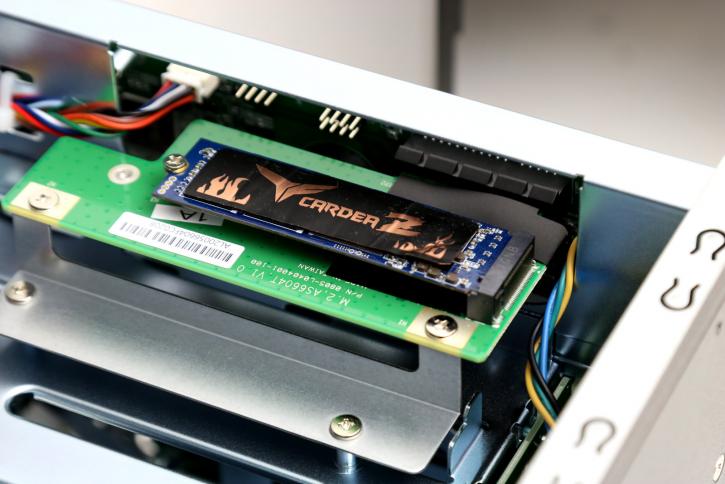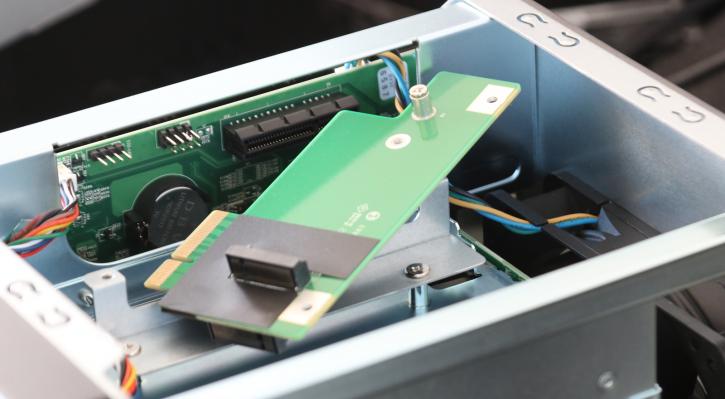Product Gallery
Product Gallery
If we remove all drive caddies, located at the left side you can see the actual motherboard slash PCB. Nothing much is going on there aside from the fact you can see a heat-sink that cools the processor. It's clearly passive and thus makes use of the cooling fan housed in the back of the NAS. if you look closely you can also see one DDR4 2400 MHz SODIMM installed.
As mentioned you can upgrade this NAS towards 8GB DDR4 (SODIMMS), pop in a compatible module and you're good to go, now in a dual-channel configuration as well (mixed capacity is supported).
At, well in, the rear of the NAS we see the SATA3 connectors, four of them. If you are going to install HDDs, please check the ASUSTOR QVL list of supported units. Most of them will all work fine up-to 16 TB even. But in the past, I installed four really old HDDs, and when the NAS dropped out of sleep mode I heard all kinds of weird noises. Two of them regained active status and one was stuck somehow between hot/sleep. Not ASUSTOR's fault of course, but this is why you always need to check the QVL list for supported storage units.
The NAS rests on rubber feet which will help against resonating noises. The NAS itself is reasonably silent. For our testing, we are mounting SSDs in an effort to max SATA3 speeds on that 2.5 Gbps connection. The NAS supports hot-swappable hard disks and comes with proper disk tray locks.
With the cover removed you'll stumble into a single M.2. slot. But wait, Dave, there's more. The PCB you look at is a PCIe card slot, remove it, and on the other side, you can install a second M.2 SSD. So yeah, two NVMe SSDs in a NAS, that's a pretty darn premium option to have if you ask me. Absolutely lovey.
One remark, the NVMe SSDs lack active cooling. The position of the fan is lower. Considering your LAN throughput is roughly 300 MB/sec we doubt any M.2. unit would ever overheat and throttle down in speed though.
